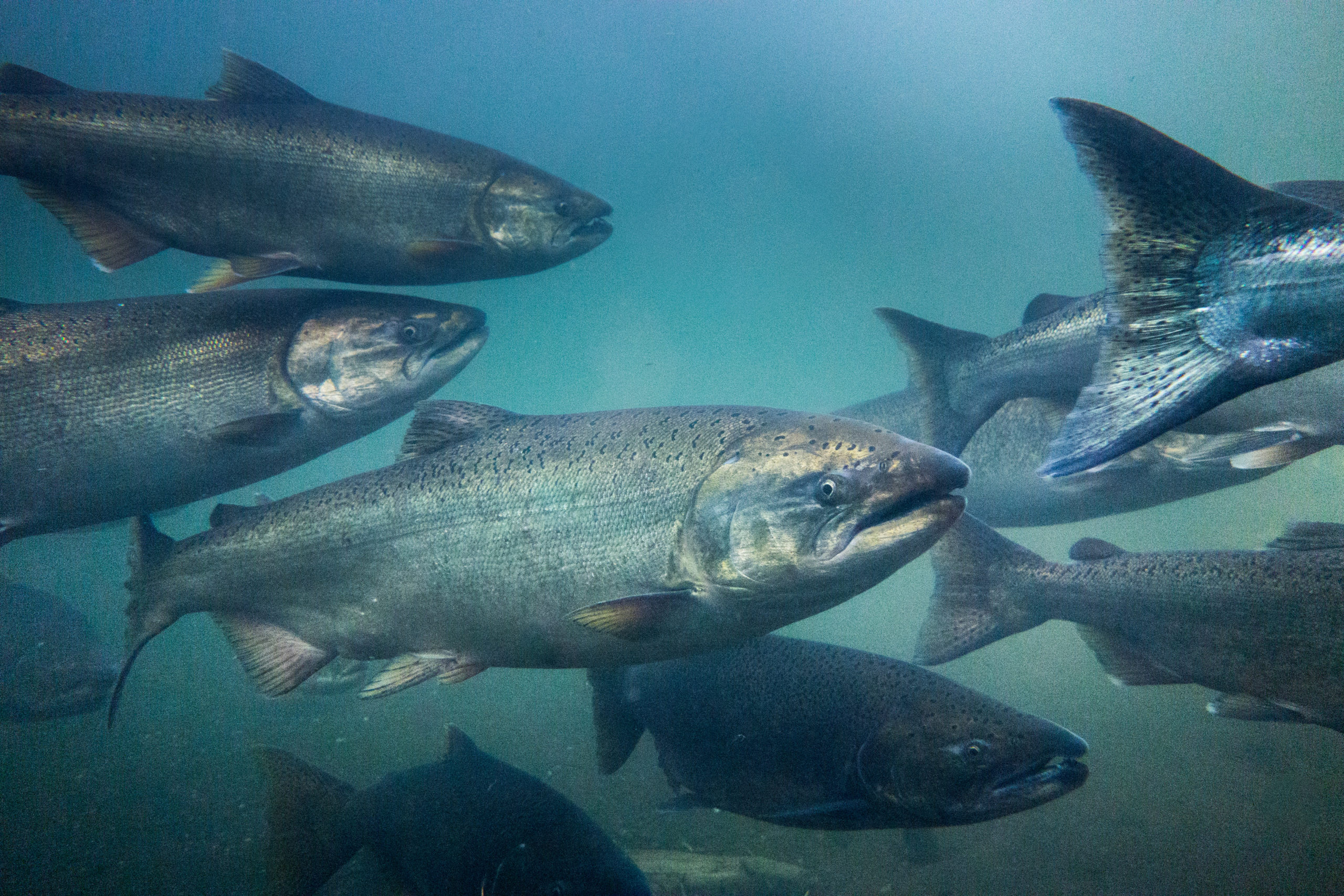How Many Are Enough?
More than 70,000 Chinook salmon return each year to Puget Sound riversA year ago, President Clinton announced that the American bald eagle, now numbering 12,000, would be taken off the Endangered Species Act list this year on the Fourth of July. Although delayed, it is now just a matter of time before the bald eagle success story is final.
Other species that have recently been taken off the list include the gray whale (off at 23,000), the peregrine falcon (off at 2,800), and the brown pelican (off at 60,000).
Last year, the federal government listed Puget Sound chinook salmon under the Endangered Species Act. In the regional debate over how much to do and how many millions to spend, one question tends to be lost: How many Puget Sound chinook salmon will be enough? Will it be 12,000, 23,000, 60,000? When can we take the Puget Sound chinook salmon off the list?
Some have said there will never be enough until we can walk across Northwest streams on the backs of salmon. Although such an extreme can be rejected, we need an informed regional dialogue on what the number should be.
To start with, how many come back now? Many will be surprised that more than 70,000 chinook salmon – both natural spawners and hatchery fish – return each year to Puget Sound rivers. And this is the number left after 87,000 Puget Sound Chinook salmon were caught for commercial sale, 26,000 for sport and tens of thousands more in ocean waters by Canadians and others. The National Marine Fisheries Service estimates that if left uncaught, about 425,000 Puget Sound chinook salmon would return to Northwest streams each year.
Another question is, how many chinook salmon came back before extensive urban development? The National Marine Fisheries Service has said the peak year ever recorded for Puget Sound chinook salmon was 1908 at 670,000 salmon many, if not most, of which were caught and canned for sale. But the 10-year average around 1908 shows a yearly number of only 135,000 salmon. And, if the highest and lowest number are removed from that average, the historical number of Puget Sound chinook salmon returning to either be caught or spawn was just 86,000. This compares to the estimated Puget Sound chinook run size today of 425,000 — if left uncaught.
Again, the American bald eagle provides a comparison. The federal government estimates that there were 100,000 bald eagles in the lower 48 states around the time the Declaration of Independence was signed. At the low point, in 1963, there were fewer than 1,000 eagles, only 1 percent of the estimated peak population. Now, with 12,000 eagles, they are scheduled to come off the list, even though they are at just 10 percent of their historic peak numbers.
Some may say that fish spawned in hatcheries should be counted separately from fish spawned in streams. But how many of those naturally spawning salmon are second- or third-generation hatchery descendents? Other species raised in captivity, including eagles, are used to supplement those raised in the wild. Interestingly, NMFS cannot distinguish a second-generation hatchery salmon from a second-generation “wild” salmon. It is important to preserve species; morally we could not allow the bald eagle to become extinct, and it has not. We have succeeded. But before we spend tens of millions of dollars a year for more Puget Sound chinook salmon – money also needed for schools, transportation and health – we need a regional discussion to answer the question: How many more will be enough?
In the meantime, the region should ask two other hard questions: First, who decides how many are enough? Second, until then should the federal government allow anyone to catch any of them?
We do not tolerate anyone shooting bald eagles for any purpose; why catch any endangered salmon? When asked last month what chinook salmon goal the federal government had set, NMFS regional director Will Stelle said he was aiming for “a harvestable surplus.”
But this was not the goal we set for the bald eagle. If the federal government had said it would not take the bald eagle off the Endangered Species list until there was a “harvestable surplus,” there would have been a political uproar.
The ESA, which is used to criminally prosecute, fine and potentially jail violators, was intended as a harsh last resort to prevent a species from dwindling to such small numbers that it would become extinct. Preventing extinction is its sole purpose.
If we want another law to promote and subsidize the commercial harvest of a species, Congress will have to enact one.
Until then, the question remains: How many more Puget Sound chinook salmon will be enough to take it off of the Endangered Species list?
Steve Marshall is partner with the Seattle-based law firm of Perkins Coie and is an advisory board member of Pacific Legal Foundation
